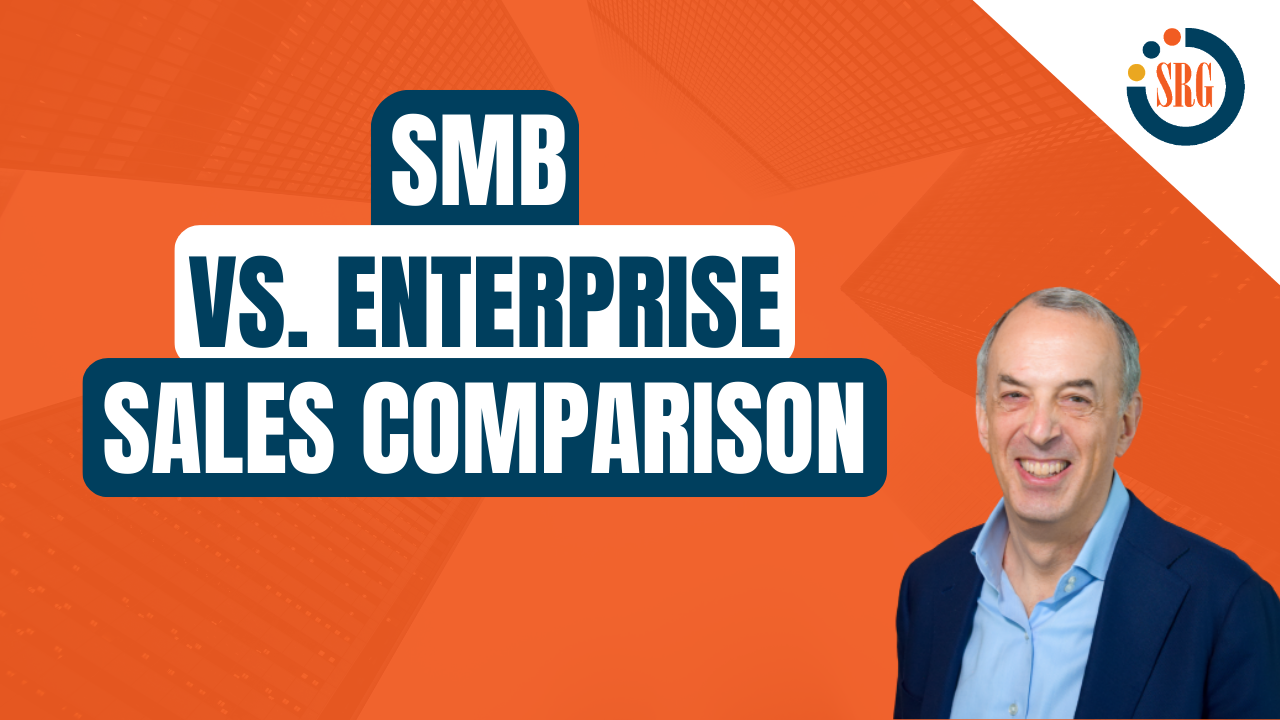One of the biggest challenges for a sales organization is moving upmarket. For example, if you target the small- and medium-sized business market (SMB) and now want to target enterprise customers – that’s where the money is – you need to rethink how you sell. Enterprise and SMB selling are fundamentally different, and each requires its own sales process, metrics, and unique selling skills.
At the heart of these differences is size.
SMB vs. Enterprise
According to Gartner, the SMB market is commonly defined as companies with fewer than 1,000 employees and less than $1 billion in revenue. Everything larger than SMB is considered the enterprise market.
The most significant difference between SMB and enterprise selling is the sales cycle. Selling to the enterprise customer usually involves many more meetings compared to SMB. In an enterprise sale, you will have to meet multiple stakeholders many times over before you close.
The enterprise buyer will likely have a well-defined buying process with multiple stakeholders, possibly a buying committee or procurement department. All of that translates into a much longer sales cycle – six to nine months, if not longer, depending on the deal size and complexity of your solution.
An SMB sales cycle, on the other hand, is much shorter – one to three months – primarily because of lower authority needs and fewer stakeholders involved.
Practically speaking, a longer sales cycle means more meetings. An SMB sale may require only three to four meetings to close, while enterprise deals can require 10 to 12 meetings (or more) to close. Moving an enterprise opportunity forward through more meetings with various senior stakeholders requires a different skill set than SMB selling.
Three Key Skills of an Enterprise Rep
So, what skills do you need to be a successful enterprise rep? While the list is long, here are three essential skills:
- Account Planning: While SMB is a volume game, enterprise selling is much more high-touch and deliberate. A successful enterprise rep with a limited number of large accounts needs to learn about the buyer’s business, operations, and critical initiatives. She must do significant pre-call planning and research, including developing a detailed account plan for each customer. Such extensive research wouldn’t make sense for an SMB rep who may be targeted hundreds of prospects.
- Relationship Management: Because the deal sizes are significant, enterprise reps need to build relationships with many stakeholders, including connecting with senior and C-level executives. Enterprise reps should be able to map an account and then methodically expand their relationship footprint within the account over many months. This requires persistence and political skills to recognize and manage various stakeholders’ competing interests and priorities.
- Value Selling: All successful selling, whether enterprise or SMB, involves understanding your customer’s problem and how your solution can address it. But this is significantly more challenging at the enterprise level, where your solution may impact various business units and stakeholders. Your ability to understand each stakeholder’s needs and then quantify the value your solution brings is essential to winning deals. Ultimately, enterprise deals die because the value case isn’t strong enough to get past all of the stakeholders and decision-makers.
Selling to enterprise accounts is not the same as selling to supersized SMB customers; they are distinct from SMB. Before making the transition to the enterprise market, carefully consider whether your team has the necessary selling skills to be successful.


